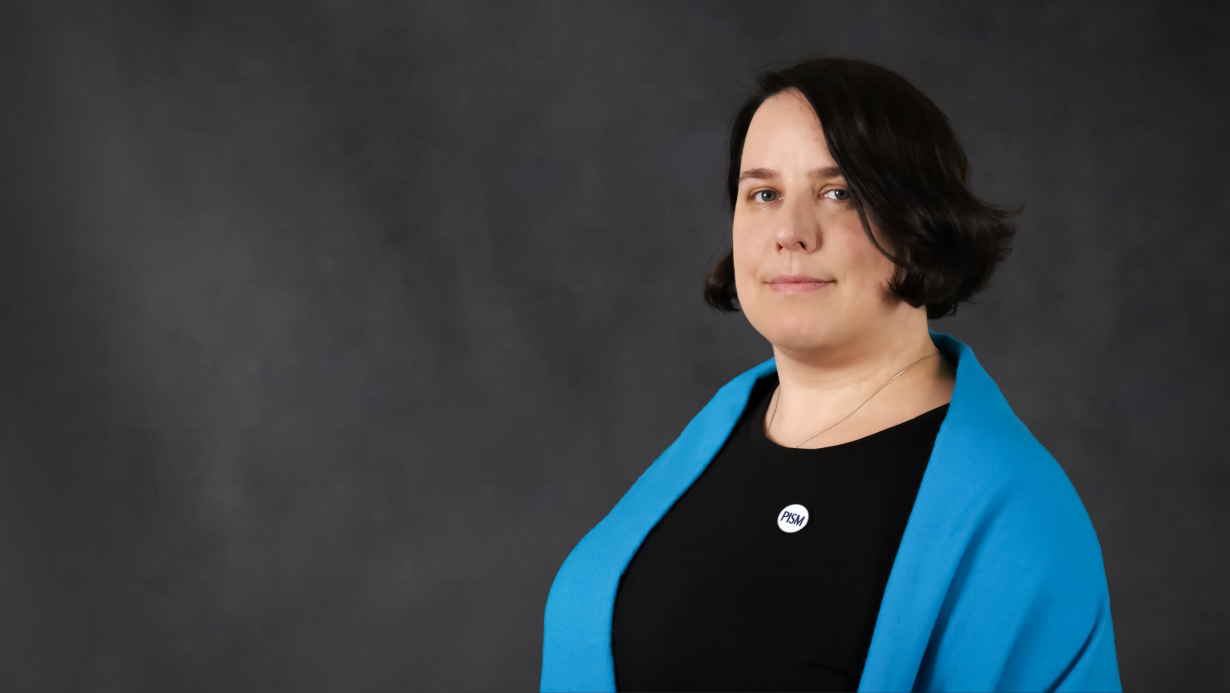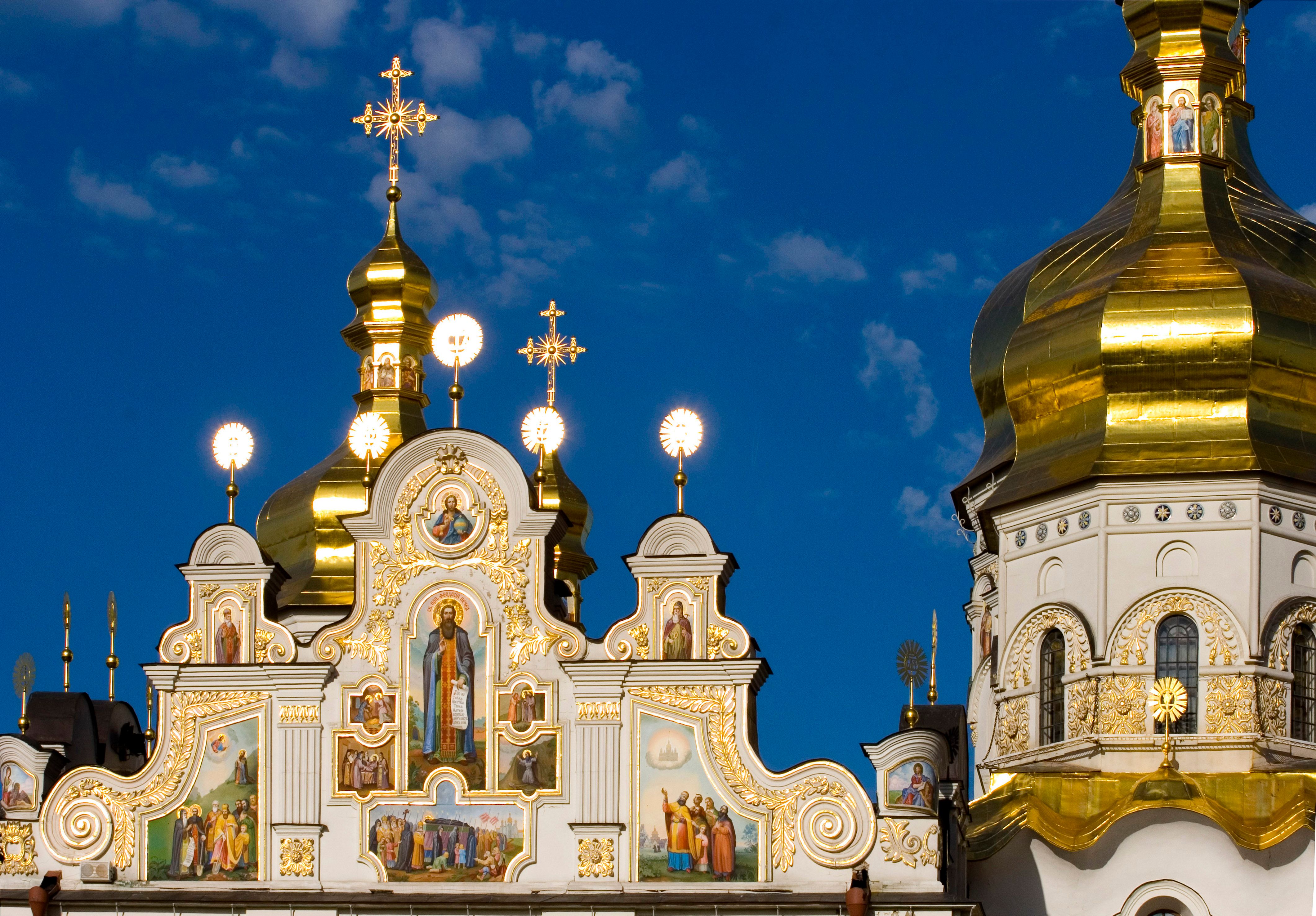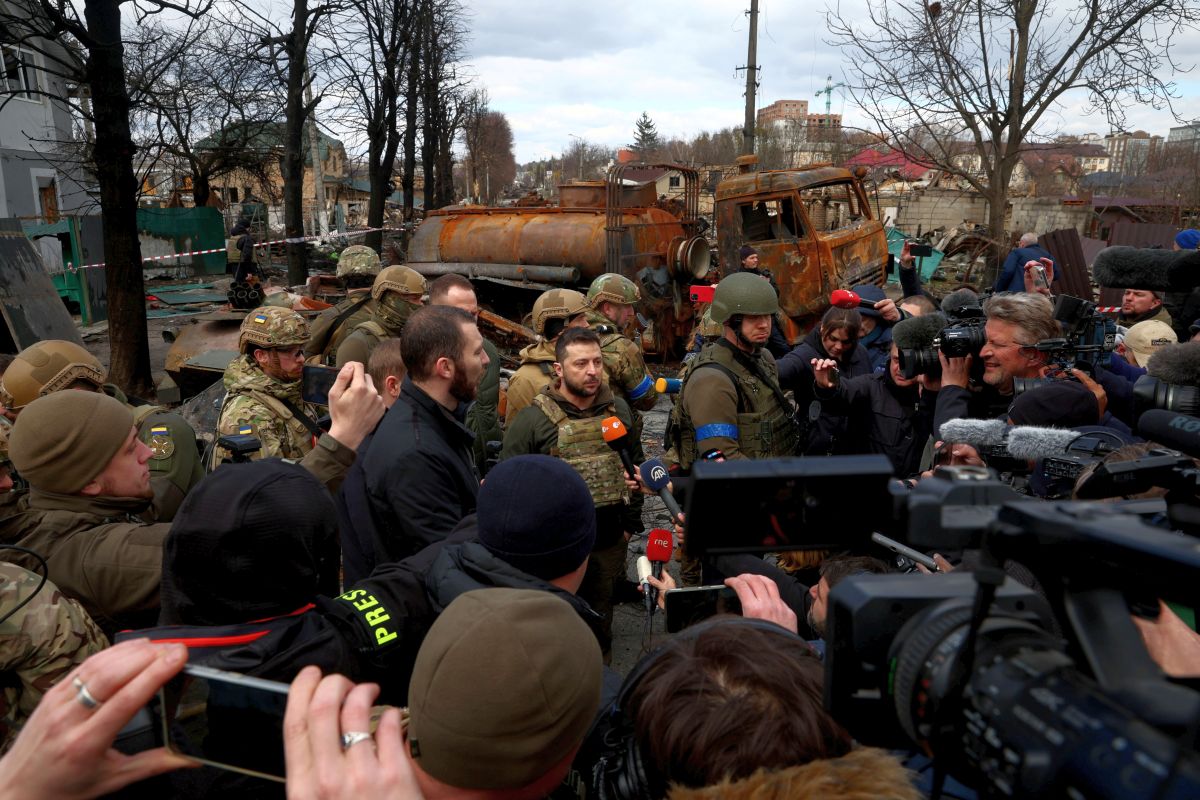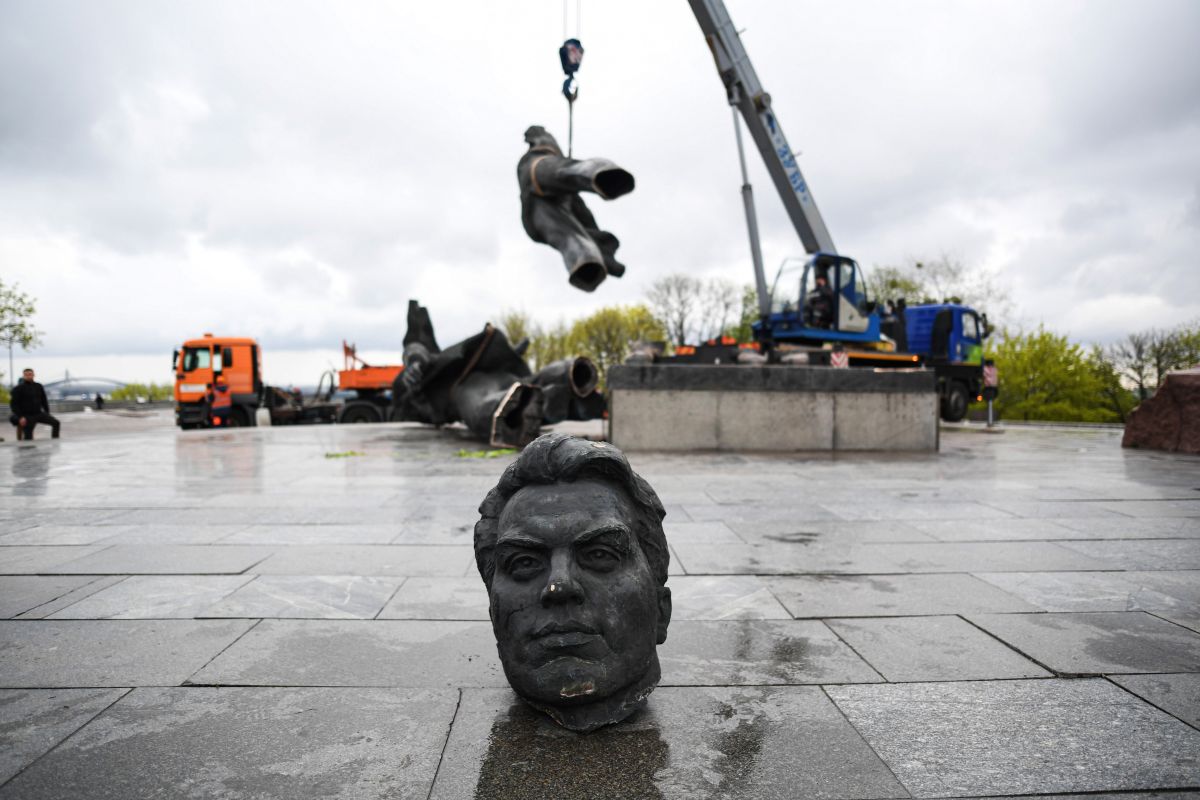Russian Aggression Speeding up Changes in Religious Situation in Ukraine
The Russian invasion of February 2022 resulted in an increase in religiosity in Ukraine. The socio-political position of the currently largest autocephalous Orthodox Church of Ukraine (OCU) in terms of number of believers has strengthened. It plays a major role in sustaining Ukrainian morale. At the same time, the Ukrainian Orthodox Church-Moscow Patriarchate (UOC-MP) is losing importance and its pro-Russian activities are not translating into a lowering of the resilience of Ukrainian society.
(1).jpg) STRINGER / Reuters / Forum
STRINGER / Reuters / Forum
Religious Situation in Ukraine
Ukraine is a multi-religious state with a high level of declared religiosity. According to a November 2022 study by the Razumkov Centre, three-fourths of the population consider themselves to be religious. The percentage of believers is the highest in the west (86%) and the centre of the country (76%), and lowest in the east and south (61% and 63%, respectively). According to a July 2022 study by the Kyiv International Institute of Sociology, the vast majority—around 70%—of Ukrainians identify with the Orthodox Church, around 8% with the Greek Catholic Church (GCC), 2% with Protestant churches, 1% with the Roman Catholic Church, and less than 1% with Judaism, Islam, or others. In addition, 10% claim to be atheists.
Orthodoxy in Ukraine is divided between the OCU and the UOC-PM. The OCU was established in 2018 as a result of the unification of two church structures not recognised by world Orthodoxy: the Ukrainian Orthodox Church of the Kyiv Patriarchate and the Ukrainian Autocephalous Orthodox Church. In January 2019, Patriarch of Constantinople Bartholomew (the honorary head of world Orthodoxy) granted the OCU autocephaly (ecclesial independence), with which he recognised it as the 15th canonical church in the world. At the same time in Ukraine exists the UOC-PM, which is not a fully independent structure, but has an autonomy within the jurisdiction of the Russian Orthodox Church (ROC).
The formation of the OCU has initiated a radical shift in the balance of power within Ukrainian Orthodoxy. The UOC-MP has gone from being the largest and institutionally strongest church to an organisation of limited significance. Currently, 77% of Orthodox Christians in Ukraine identify with the OCU (about 48% in 2020) and just over 5% with the UOC-MP (compared to over 21% in 2020). The rest of the respondents described themselves as “simply Orthodox” people who do not affiliate themselves to a particular Orthodox church. However, the growth in the number of OCU believers is not translating into an expansion of its structures: in total, as of December 2018, only 12% of parish communities had made the decision to leave UOC-MP, although this process accelerated after the Russian invasion.
One in four Ukrainians, regardless of confession, declare that they have become more religious since the Russian invasion. The number of people who perceive the positive role of religious institutions in society has also increased. They enjoy a relatively high level of public trust (about 70% of the population trusts them), and surveys indicate that in the war reality, they are mainly expected to provide psychological and spiritual support, to act for vulnerable groups (refugees, people with disabilities), and to support the Ukrainian Armed Forces. Religious organisations fulfil these expectations in a variety of ways, from humanitarian assistance to chaplaincy services.
Role of the Ukrainian Orthodox Church
The Russian aggression accelerated the process of strengthening the OCU’s role in Ukraine. The OCU unites society and sustains high mobilisation in the defence effort. Its new position is related, on the one hand, to the lack of public acceptance of the pro-Russian actions of the UOC-MP, and, on the other hand, to the intransigent and unambiguous position of the OCU itself. The church actively participates in supporting the defence effort, for example, through collections for soldiers’ personal equipment, it also helps refugees (e.g., by organising accommodation), conducts information activities, consistent with the strategic communication of the Ukrainian authorities. It also carries out such activities outside the country (e.g., last year, for the first time it took part in the assembly of an ecumenical organisation, the World Council of Churches).
In the first weeks of the war, President Volodymyr Zelensky did not favour any of the churches, and part of his political environment favoured the UOC-MP (e.g., Ivan Bakanov, the head of the Security Service of Ukraine, SSU, who was dismissed in July 2022). However, as the OCU’s position grew, it began to receive stronger support from the authorities from November 2022 onwards. One such action was the appointment of a new head of the State Service for Ethnopolitics and Freedom of Conscience (an office responsible for implementing state policy on, among other things, religion and protecting the rights of indigenous peoples and national minorities). The new head, Viktor Yelensky, have been known for his advocacy of the autocephalous church. An expression of political support included the transfer of the date of the state celebration of Christmas and, at the same time, a non-working day, exclusively to 25 December (until 2017, only 7 January was a day off, then both days). This is an adaptation of the legislation related to the new liturgical calendar (Revised Julian calendar) adopted this year by the OCU and the GCC.
Fight Against Russian Influence
Although in the first days after the invasion, Metropolitan Onufriy (the head of the UOC-MP) condemned Russia’s actions, and in May 2022 the synod of this Orthodox church removed its dependence on the ROC from its status, the church has not broken ties with Russia and continues to be a de facto part of the ROC. In 2022, it was revealed that some of the top hierarchs, including Metropolitan Onufriy, hold Russian citizenship. Moreover, some representatives of the UOC-MP directly supported the Russian army, for example, by providing intelligence information to the aggressor (e.g., participation in correcting fire, co-creation of proscription lists).
It has become clear to the Ukrainian authorities that the independence of the Orthodox Church is not only a religious and social issue but also fundamental to strengthening national security, which directly affects Ukraine’s sovereignty. They therefore seek to limit the activities of the UOC-MP. Since January this year, a government bill on banning it has been under way in the Verkhovna Rada. If the act is adopted, in practice, it will be the courts that will decide on the ban separately for each legal entity, from parish to metropolis. Some local authorities have already passed symbolic resolutions to ban the UOC-MP on their territories; however, they have no legal force. At the same time, the SSU is conducting a number of investigations into cases of collaboration between UOC-MP clergy and Russia. Among some of those arrested are Metropolitan Pavel, the superior of the Kyiv-Pechersk Lavra. The actions of the authorities are supported by society, with 85% of Ukrainians stating that the state should interfere in the activities of the UOC-MP, while 66% are convinced that this church should be completely outlawed.
Part of limiting the influence of the UOC-MP is also taking away its control over places of worship. Among the key actions of the authorities is sorting out the situation at the Kyiv-Pechersk Lavra, which is one of the most important sites for Ukrainian Orthodoxy and Ukrainian culture and history. Owned by the state (formally the historic site falls under the Ministry of Culture and Information Policy, MCIP), it had remained in use by the UOC-MP since the 1990s, becoming a centre of russkiy mir (Russian world) propaganda. The termination of the contract allowed the Uspenski cathedral, among others, to be handed over to the OCU for use. The clergy and members of the UOC-MP, however, did not immediately relinquish the buildings and obstructed the work of the MCIP commission inventorying the Lavra. However, there were no major protests. By mid-July this year, the commission had inspected most of the site, discovering a number of deficiencies, including illegally added buildings and damage to historic monuments.
Conclusions and Perspectives
The OCU plays an important role in wartime in strengthening social resilience and supporting the community’s defence effort. Along with the Greek Catholic Church, the church is becoming a symbol of Ukrainianness. This translates into an increase in the number of believers. People who previously identified with the UOC-MP or did not state their affiliation to a particular church (declaring themselves “simply Orthodox”) are now more likely to identify with the autocephalous church. The OCU will become increasingly important in the social life of Ukraine, but not necessarily politically, due to the smaller role of religion in public life than, for example, in Poland.
Over time, the influence of the Moscow Patriarchate in Ukraine will continue to weaken. This is facilitated by the Ukrainianisation of society and the outflow of believers to the OCU. The church will continue to be, to a limited extent, a Russian tool for information operations, especially in southeastern Ukraine. The cautious policy of the Ukrainian authorities towards the UOC-MP and the avoidance of confrontation (e.g., on the territory of the Kyiv-Pechersk Lavra) reduces social tensions related to the restriction of the activities of this church. However, the introduction of a total ban on activities will be hampered by, among other things, Ukraine’s international legal obligations regarding fundamental human freedoms, including freedom of religion and religious practice, especially in the context of European integration. Hence, among other things, such slow work on the law on the banning of the UOC-MP.





